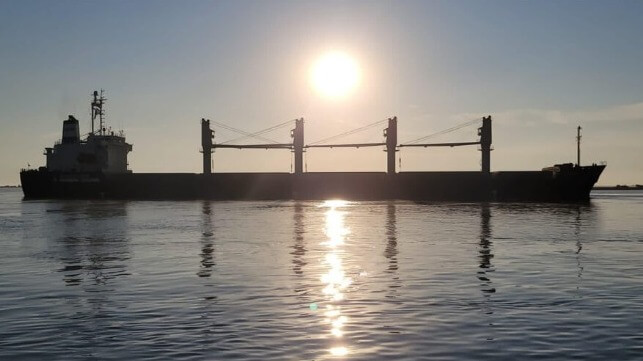Sea Cargo Seeks to Add Owners and Looks to MPEC80 to Increase Targets

The Sea Cargo Charter, a voluntary program among the world’s leading charterers to encourage alignment with decarbonization goals, reports the industry is making slow progress while calling for more participation, higher ambitions, and accelerated targets. The effort launched in October 2020 issued its second annual report highlighting 90 percent reporting by 33 signatories but that the average climate alignment among the participants however remained stable with 2021.
The effort which includes many of the largest companies ranging from Cargill to Trafigura Maritime as the current chairs, to Bunge, Dow, Equinor, Shell, and operators Maersk Tankers, NYK, Torvald Klaveness, and more, seeks to provide a framework for managing alignment with the climate goals. The Sea Cargo Charter brings together charters, operators, shipowners, and industry experts to assess current performance as part of the global framework. The goal is to help companies make decisions and influence the overall direction of the shipping industry.
They write in their annual report “The industry is realizing the importance of decisions taken now towards achieving the goal of full decarbonization by 2050.” The organization expresses optimism citing the emergence of technologies and the efforts by financial institutions to de-risk investments to incentivize the efforts for the transition to net zero.
The 2022 data averages the reports from the 33 participants which according to Sea Cargo Charter account for more than 17 percent of total bulk cargo transported by sea over the year. They highlight that the average reporting rate has increased since last year to 90 percent.
The simple average score in the Sea Cargo Charter report however was calculated at 1.6 percent and the median was 2.7 percent. Scores ranged from -21.8 percent to 21.4 percent, with 60 percent of reporting signatories having a score of +5 percent or less. A negative score implies alignment while a positive score denotes misalignment to the decarbonization trajectory.
The scores vary widely based on the range of activities and other factors. Changes carried out to the chemical and liquified gas tanker baselines, as well as trade patterns, and better operational efficiency, all impacted this year’s results. Overall, the largest crude oil tankers showed the strongest alignment, while the smaller dry bulk carriers were at the other end of the spectrum. Oil tankers as a category have the best alignment with the only negative mean and medium scores, followed by liquified gas carriers, bulkers, and the lowest alignment by ship type among the chemical carriers.
Moving forward, the organization highlights the importance of the decisions expected from the International Maritime Organization in July. They hope that the Marine Environment Protection Committee (MEPC80) will agree on significantly more ambitious targets to accelerate the rate of decarbonization.
“To make our voice louder, we are looking to open up our membership scope to not only charterers and cargo owners but also shipowners so that they can join us and make the Sea Cargo Charter a truly industry-wide initiative where we together unite and work towards one global transparent and standardized emission reporting system,” said Eman Abdalla, Vice Chair of the Sea Cargo Charter Association and Global Operations Director at Cargill Ocean Transportation.
Against the backdrop of increasing regulation and public attention to the efforts, Sea Cargo Charter highlights the importance of a regulatory framework that allows companies to take commercial decisions to achieve their individual goals and to align with the overall efforts. Based on the outcomes of MEPC80, the organization looks toward adopting steps in its efforts to make the reporting more robust and to raise the ambition level of the participants.
